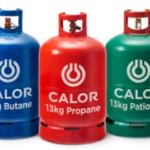

A step-by-step guide to cleaning your wood burner
With winter coming to an end, you’re likely going to be using your wood burner less and less as the warmer days set in. Now is the perfect time to clean it, and if you’ve used it a lot over winter, it will certainly need some TLC. Here’s a step-by-step guide to cleaning your wood burner.
1. Get the right equipment
Before you start, you need to be prepared with the right kit. You will probably want some newspaper or a mat to protect your floor. Gloves are a must, as is a shovel and a metal container that can be used to get rid of the ash – no plastic buckets here. You will also need something to clean the chimney if you aren’t hiring a chimney sweep to do it for you; some people use a drain rod with a brush attached to the end.
2. Clean the interior
Get your gloves on as the first step is clearing the interior of ash. Make sure it has fully cooled down before you begin. Use your small shovel to move the ash from the bottom of the burner to your metal container. Keep it contained securely outside, away from any materials that could catch fire.
3. Clean the glass door
For this, you may choose to buy specialist cleaning products, but for a cheaper and easier option, you can use the materials your wood burner produces itself. Take a cool piece of charcoal from your wood burner and dampen it with some water, before rubbing it on the inside of the glass. Then, use a piece of kitchen roll to wipe away any excess moisture – the glass will be spotless!
4. Clear the chimney/flue
As we mentioned above, you can hire a specialist chimney sweep to do this for you. If you fancy giving it a go yourself though, make sure your drain rod can fit through the whole chimney to clean all soot build-up.
5. Clean the exterior
This simple step should be a part of your regular cleaning routine but is probably going to be most vital after clearing out soot and ash. Use a standard vacuum cleaner with brush attachments to make sure no dust is left behind. Then, use a dry, clean cloth to wipe the exterior down – don’t use a wet one as this could result in rust.
